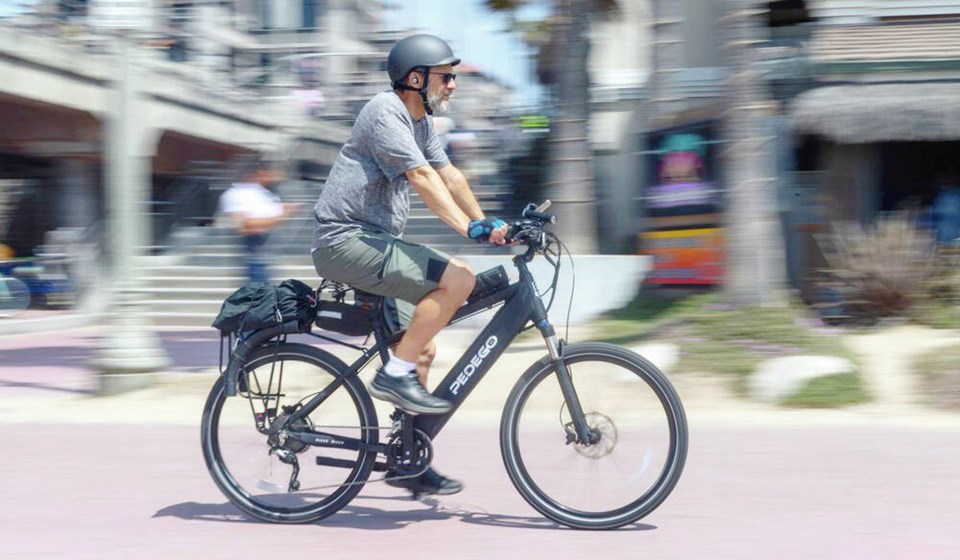It will come as a shock to no one that skyrocketing gas prices in the past three months are pushing lots of people to invest in an electric bike. Even Alberta, the bastion of big oil and even bigger trucks, is seeing a dramatic surge in electric bike sales.
Worldwide the demand is mushrooming, too. Next year, the number of e-bikes in use is expected to hit 300 million, up 50 per cent from 2019.
For many, the ebike is an ideal solution. Not only can you rid yourself of a potential monthly gas bill in the hundreds of dollars, but you can also relieve yourself of monthly parking fees that can reach $500 or more. An e-bike also means you don’t have to worry about licencing and insurance costs, all while improving your health and helping the environment.
This demand, coupled with global economies still in the grip of the pandemic induced supply chain problems, means that many bike dealers have problems getting and maintaining stock.
This surge, however, will put another new dynamic on our shared roadways and safety concerns should be top of mind.
B.C.’s motor-assisted cycle regulations have only seven short sections. They state that an e-bike must be powered by an electric engine only delivering no more than 500 watts of power — that’s around 2/3 of a horsepower — and can’t go faster than 32 km/h on a level surface. There’s no licencing or insurance required but you have to be 16 to operate one and, like all cyclists in B.C., you have to wear a helmet.
The age restriction makes sense. Thirty-two km/h isn’t that fast for a car but for a bike, it’s speedy. And predictably with more speed comes more injuries.
In 2019, Charles DiMaggio, a researcher with the U.S. Consumer Product Safety Commission, led a study that showed e-bike riders were more likely to sustain internal injuries (17.5%) and be hospitalized as compared to their traditional bike counterparts (7.5%).
The study, based on hospital emergency room admissions, also found that e-bikes were three times more likely to collide with a pedestrian than a traditional bike. All this is because e-bikes, based on the DiMaggio study, essentially proceed at twice the average speed of a traditional bike, 16 km/h versus 32 km/h.
E-bike gurus also worry that the mindset of some traditional cyclists, who don’t bother wearing proper personal safety equipment, including helmets, is spilling over into the e-bike community.
Hardcore traditional cyclists don’t just wear cycling shoes, padded shorts and gloves to look cool, they wear that gear to protect themselves in worst case scenarios.
Wiping out at 30 km/h on an e-bike while being helmetless, shirtless, and flip-flop wearing would be just as excruciating as doing it on a motorcycle.
Eons ago, when I learned to ride a motorcycle, one of my instructors continually harped on the importance of personal protective gear: “Dress for the slide — not the ride.” As the e-bike wave grows, riders need to think seriously about protecting themselves.
The e-bike trend opens up a whole new world of freedom for those who might have lost that final bit of oomph to climb a steep hill or go that extra five or 10 kilometres. But in that new world there are some important differences — beyond just the higher cost of purchase and maintenance for an e-bike.
Cycling pundits mostly agree that there’s a learning curve in manoeuvring a heavier and faster machine. Finding a different centre of gravity, learning different braking distances and getting used to that newfound pedal power takes a bit of time and practice.
The problem of not being seen by car drivers, which traditional cyclists and motorcyclists deal with every day, is even more important when you’re now able to zip along at 20 to 30 km/h.
E-bike pundits point out that if you understand the specific needs of riding an e-bike, you’ll be just fine. There are dangers just like any other venture onto our roadways but these dangers are easily reduced by being a properly equipped and responsible rider.
Glove Box: A reader wondered if he was wrong in trying to cross a street at an intersection with no marked crosswalk. He felt like a sitting duck as car after car whizzed by, ignoring him. Many drivers have forgotten that a crosswalk is also “the portion of a highway at an intersection that is included within the connection of the lateral lines of the sidewalks on the opposite sides of the highway”. So basically every intersection has a crosswalk — painted or not. I also explained to him, “true, you are right, but you never want to end up being dead right.”



